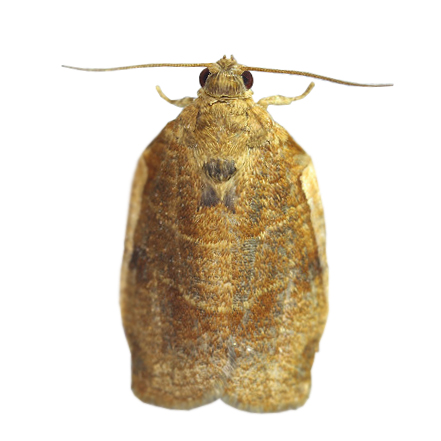


| Latin Name | Choristoneura longicellanus |
| Common Name | Hoshinoa longicellana |
| Biology | Adult moths are active at night and phototactic, mating and laying eggs shortly after emergence, with eggs mostly deposited on the undersides of tea leaves. Upon hatching, larvae first feed gregariously on eggshells before dispersing to inflict damage: early instars skeletonize leaf mesophyll, while later instars roll leaves into shelters to feed inside; when disturbed, they release silk threads to suspend and relocate. This pest produces multiple generations annually, overwintering as pupae in rolled tea leaves or fallen foliage; high-temperature and high-humidity environments favor its development and reproduction. |
| Damage | This pest primarily damages tea plants and secondarily harms forest trees including oak and birch. |
| Distribution Regions | East Asia |
| Monitoring | Pheromone lures mimic natural sex pheromones to attract male insects into specialized traps for population monitoring and suppression. As a core IPM component, monitoring enables early risk detection and targeted control. Mass trapping reduces mating opportunities to curb offspring populations. Protocols: ●Use only with matched traps. ●15-45 traps/hectare,replace/replenish every 4-6 weeks. ●Wear gloves or wash hands with detergent when switching lure types. ●Refer to trap-specific hanging instructions. |
| Recommended Traps | Delta Trap, Wing Trap |

ご連絡先情報をご提供ください。精密にマッチしたフェロモンソリューションをご提供します。当社の既存ポートフォリオに最適なソリューションが見つからない場合、合成化学チームが分子構造設計から量産まで一貫してカスタム開発を実施いたします。